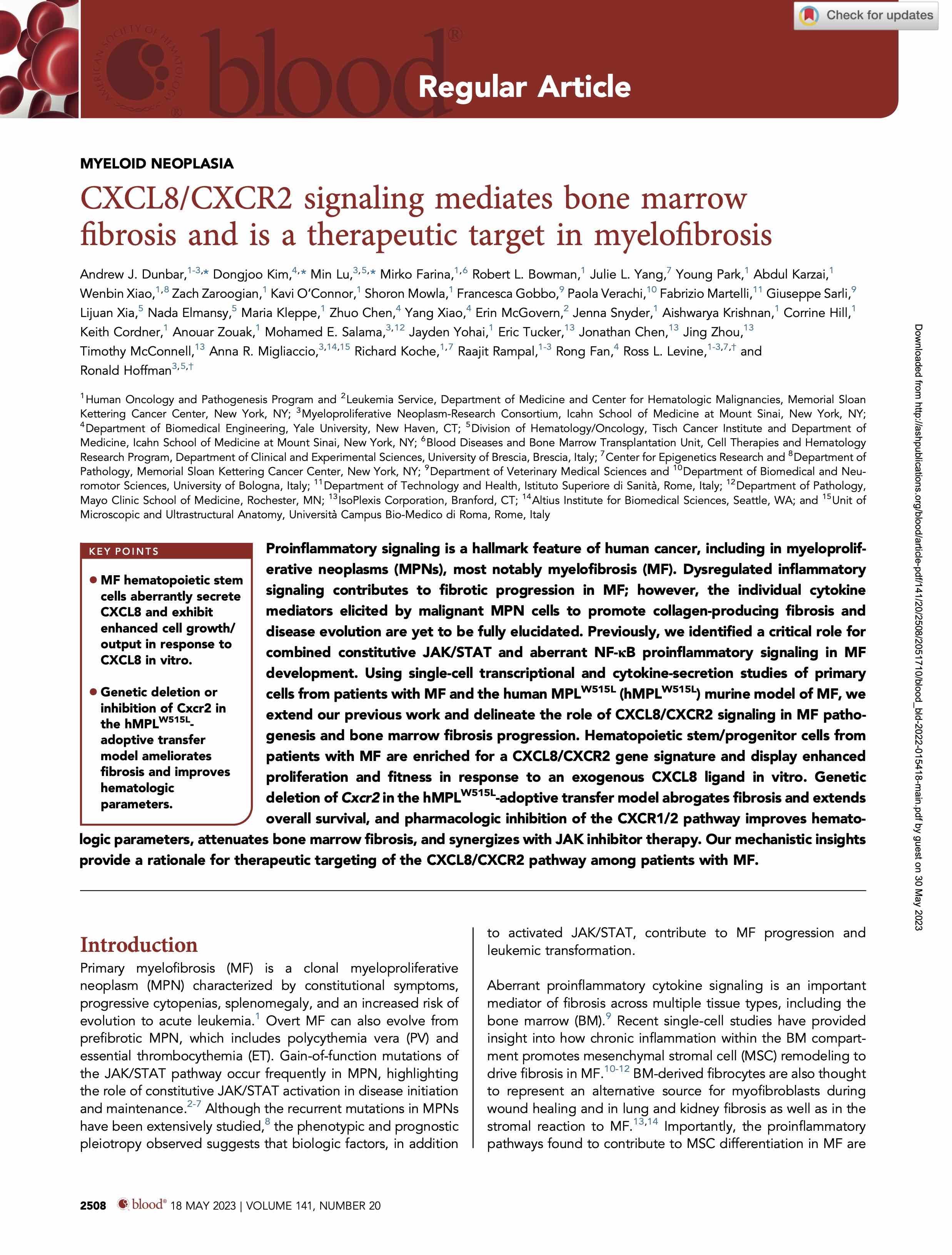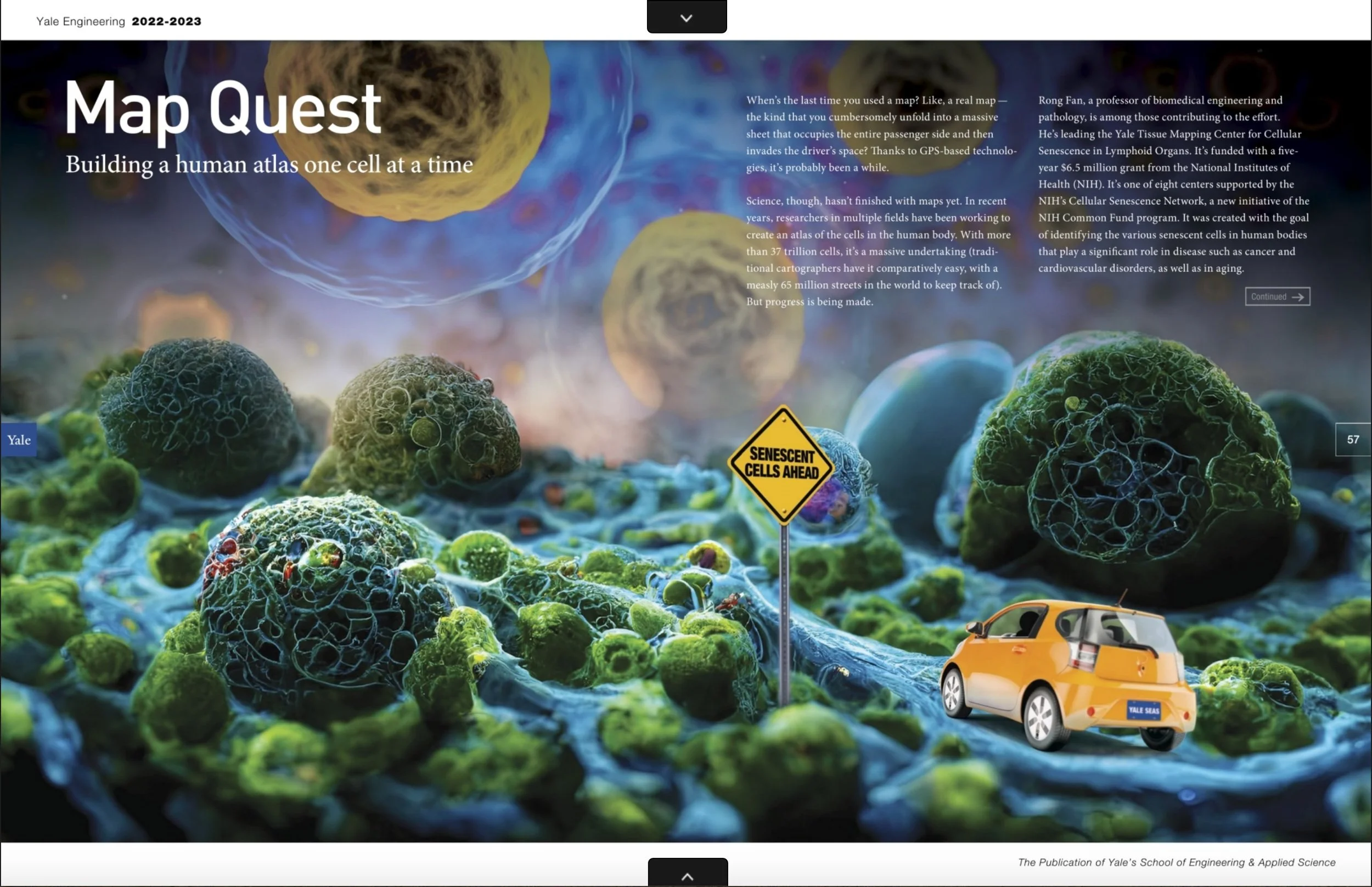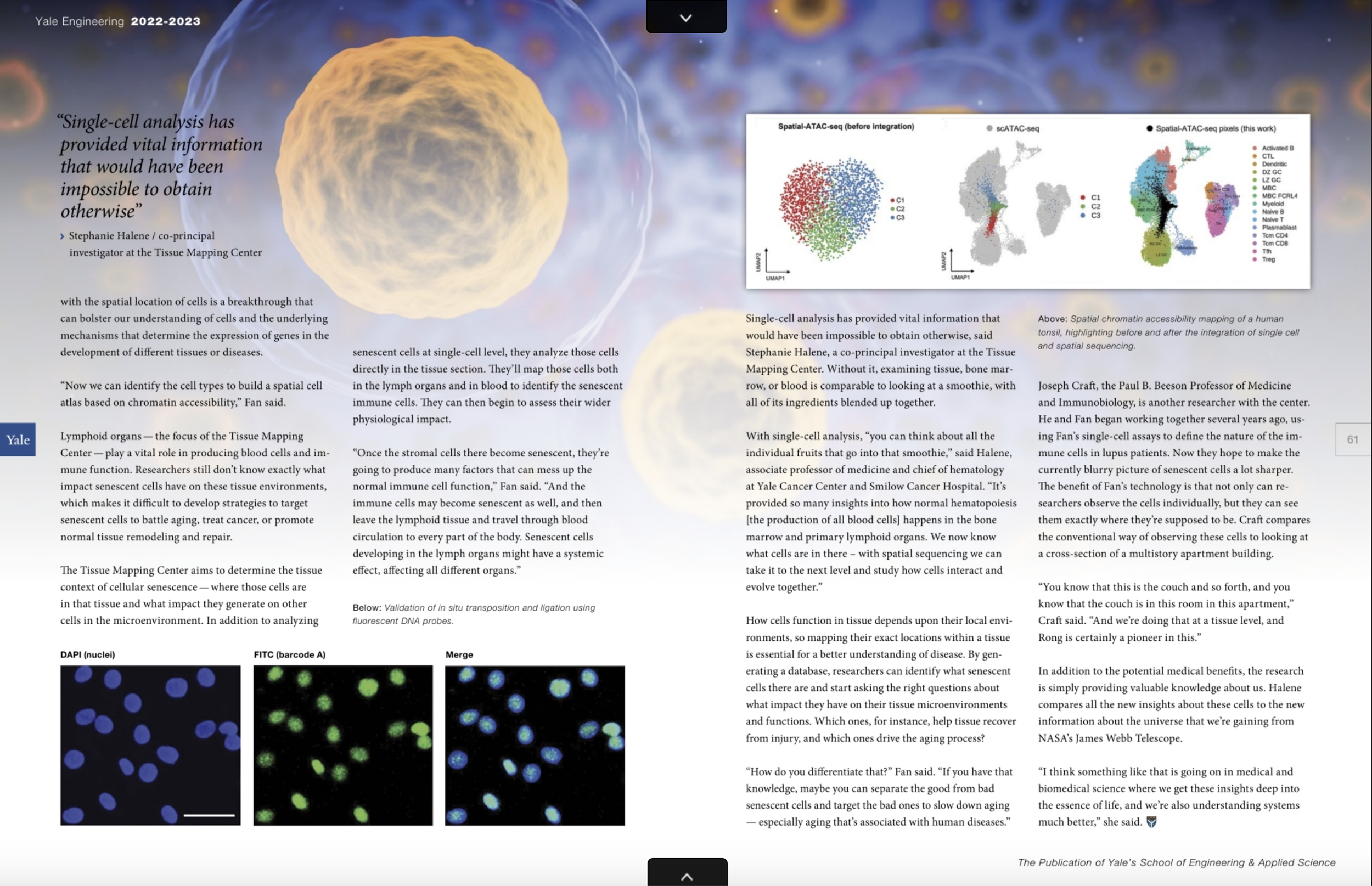February 17, 2023
Blood
A collaborative project led by Profs. Rong Fan (Yale), Ross Levine (MSKCC), and Ronald Hoffman (Mount Sinai) reported dysregulated inflammatory signaling in myelofibrosis, a type of myeloproliferative neoplasms.
Highlighted in Blood Editorial Commentary
Shelter from the cytokine storm in myelofibrosis. Blood, 141 (20): 2415–2416 (2023). https://www.sciencedirect.com/science/article/pii/S0006497123005633
January 3, 2023
CMBE Conference
Dr. Yang Xiao was selected for 2023 BMES-CMBE Postdoctoral Researcher Travel Award, for her contributions in cellular and molecular bioengineering. She gave a talk at the 2023 BMES CMBE conference in Indian Wells, California.
March 15, 2023
Nature
Spatial Multi-Omics: Pushing the limits of complexity and throughput in biomedical studies. Led by Prof. Rong Fan (Yale) and Prof. Gonçalo Castelo-Branco (Karolinska Institutet), our team invented a spatial platform for co-profiling mRNA and open chromatin up to 20 um, showcased in mouse embryos, brains, and human brains.
Highlighted in Nature Research Briefing
Gene expression and epigenetic regulation co-mapped in brain tissues. Nature, Advance online publication. https://www.nature.com/articles/d41586-023-00436-z (2023).Highlighted in Nature Reviews Genetics Research Highlight
Layering epigenomic and transcriptomic space. Nature Reviews Genetics, Advance online publication. https://www.nature.com/articles/s41576-023-00596-8 (2023).
December 1, 2022
Cell Stem Cell
Led by Prof. Stavros Thomopoulos (Columbia), our team defined enthesis progenitor cells and their potential to enhance healing. We provided a comprehensive transcriptomic analysis of the cell types residing the interface between tendon and bone, by single-cell RNA-seq and in vivo mouse models .
Highlighted in Cell Stem Cell editorial preview
Specialized cells for building tissue bridges. Craft A and Galloway J. Cell Stem Cell, 29 (12): 1615-1616 (2022).
December 1, 2022
Nature Nanotechnology
Led by Prof. Li Qiang (Columbia) and Prof. Kam Leong (Columbia), our latest work found that a positively charged nanomaterial could selectively target visceral fat, and showed effectiveness in inhibiting lipid storage in obesity. Single-cell analysis and animal studies showed that PG3 polymers increase energy expenditure in adipocytes.
Highlighted in Nature Nanotechnology Research Briefing
Targeting and reducing abdominal fat using polycations. Nature Nanotechnology, 17(12):1249-1250 (2022).Media Coverage
Positively Charged Nanomaterials Treat Obesity Anywhere You Want, Columbia Engineering News, Dec. 1 , 2022In-depth Report
A New Hope in the Battle Against Obesity, The Aging Issue, Columbia Engineering, 2022.
August 17, 2022
Nature
Led by Prof. Rong Fan (Yale) and Prof. Gonçalo Castelo-Branco (Karolinska Institutet), we created “Spatial-ATAC-seq”, a method for genome-wide mapping of chromatin accessibility in tissues with high-spatial cellular resolution. This novel technology enables probing the role of the chromatin landscape in shaping cellular states and how they can evolve.
Featured in Research Highlight
Chromatin found in space, Perdigoto C. Nature Structural & Molecular Biology, 29 (843) (2022).
Media Coverage
Map Quest - Map a human atlas one cell at a time, Yale School of Engineering and Applied Science,
Yale Engineering, P56-61 (2022).
July 28, 2022
Neuro-Oncology
Our latest work found GBM invasion is associated with unique transcriptomic features. Invasive GBM are less dense and proliferative than noninvasive counterparts. Specifically, CRYAB drives GBM invasion and contributes to postoperative recurrence.









